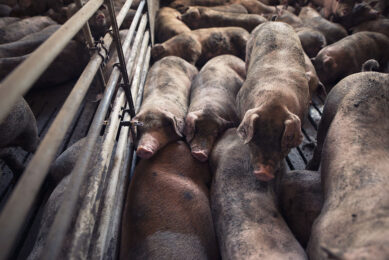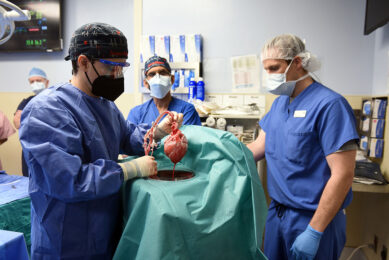Analysts expect losses for hog producers

Following a USDA report showing an increase in hog numbers on US farms, experts are predicting further losses for farmers.
“We’re looking at big-time red ink,” said John Lawrence, Iowa State University Extension economist. “There will be some producers who will opt out of hog production,” particularly those farmers who are diversified in crops and who can sell their corn and soybeans at today’s high prices.
The reports stated that the number of hogs on US farms is currently 65.9 million, which represents a 7% increase from this period a year ago.
In the US hog-producing state of Iowa, 18.7 million hogs were reported at the beginning of March this year -up % from 2007.
No other major hog- producing state came close to matching Iowa’s increase in hog numbers. In North Carolina, a 6% increase was reported in its total inventory to 10 million hogs.
Hogs used for breeding purposes totalled 6.14 million on March 1, the USDA said, an increase of less than 1% from a year ago.
Reduction in hog herd
Lawrence believes that Iowa hog producers have lost money on each hog sold for five months in succession.
It will be the end of 2008 or into early 2009 before there is a reduction in the number of hogs sent to slaughter and hog prices improve, commented Lawrence.
Professor and Extension leader at Kansas State University, James Mintert, said that the report showed that breeding herd numbers indicate “a little bit of interest in reducing the herd, but it’s pretty low and pretty small.”
Hog prices will continue to be affected by large supplies of beef and poultry. In addition, larger exports of corn and soybeans are expected because of the relatively cheap US dollar, Mintert said, and that will make feed costs even higher.
“If we see some adverse weather conditions this summer, we could be setting ourselves up for a train wreck,” Mintert said. “If we have any kind of crop production trouble this summer and a significant yield downturn, then you create an explosive situation for grain prices this summer.”
Related website:
• USDA











